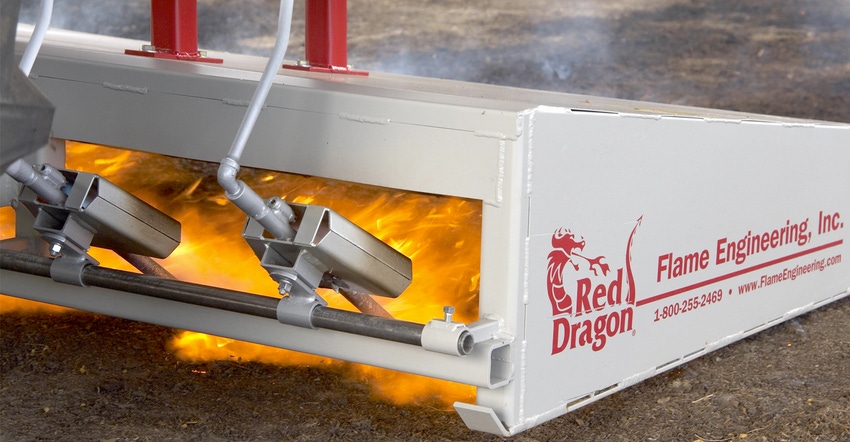
Pathogens are the bane of existence these days for poultry farmers. As of early April, nearly 25 million birds in 25 states have been affected by the most recent U.S. outbreak of highly pathogenic avian influenza, with more commercial and backyard flocks testing positive nearly every day.
Across the Great Plains and Midwest states, commercial flocks of chickens and turkeys, as well as backyard flocks, have all been confirmed as positive for the virus, along with numerous reports of HPAI in wild waterfowl.
This situation makes sanitation of poultry barns and facilities, as well as biosecurity measures, more important than ever.
Propane potential
While chemicals are normally relied upon to sanitize poultry barns, Michael Newland, director of agriculture business development at the Propane Education and Research Council (PERC), explains how propane provides poultry producers with an efficient defense against pathogens in their barns.
Newland says available propane technology provides some true firepower to help rid barns of pathogens that can deter the health of the flock. Through equipment such as the Red Dragon Poultry House Flame Sanitizer from Flame Engineering, for instance, propane offers another option, especially to those averse to using chemicals or those in organic poultry production.
“We're shooting open flame underneath a metal hood to sanitize the chicken litter or the bare floor” of the barn, Newland says.
He says the Red Dragon unit connects to a tractor’s three-point hitch and has six propane torches located under an enclosed steel hood that directs the 1,400-degree F heat to the floor or litter. The torches are supplied by a 120-gallon propane tank.
In addition to sanitizing the barn floor and poultry litter, the intense heat kills pathogens, reduces ammonia levels and controls harmful diseases that can affect bird weight and vitality. In trials, these units show 99% effectiveness, Newland says.
Resisting resistance
Another concern whenever using chemical disinfectants is the chance that bacteria, viruses or fungi will build a resistance — a concern that does not exist when using propane heat, Newland says.
“Once the heat dissipates, there is no more residue,” he says. “There are no lingering effects.”
Documentation on the Red Dragon website states that field testing shows fuel consumption was about 25 gallons of propane to flame a 40-foot-by-500-foot poultry barn as the tractor traveled at 1-2 mph.
Newland admits that the Red Dragon pull-type unit will not be able to access all areas of the barn, but recommends hand-held torch units to reach those areas, obviously while practicing extreme caution. So not only can propane be used to heat poultry barns to desired temperatures, but Newland and PERC also urge producers to consider other pathogen-fighting benefits that propane-powered sanitizing equipment could offer, with its ability to kill pathogens that may lead to unhealthy flocks.
Learn more about the Red Dragon propane sanitizer at flameengineering.com.
About the Author(s)
You May Also Like






